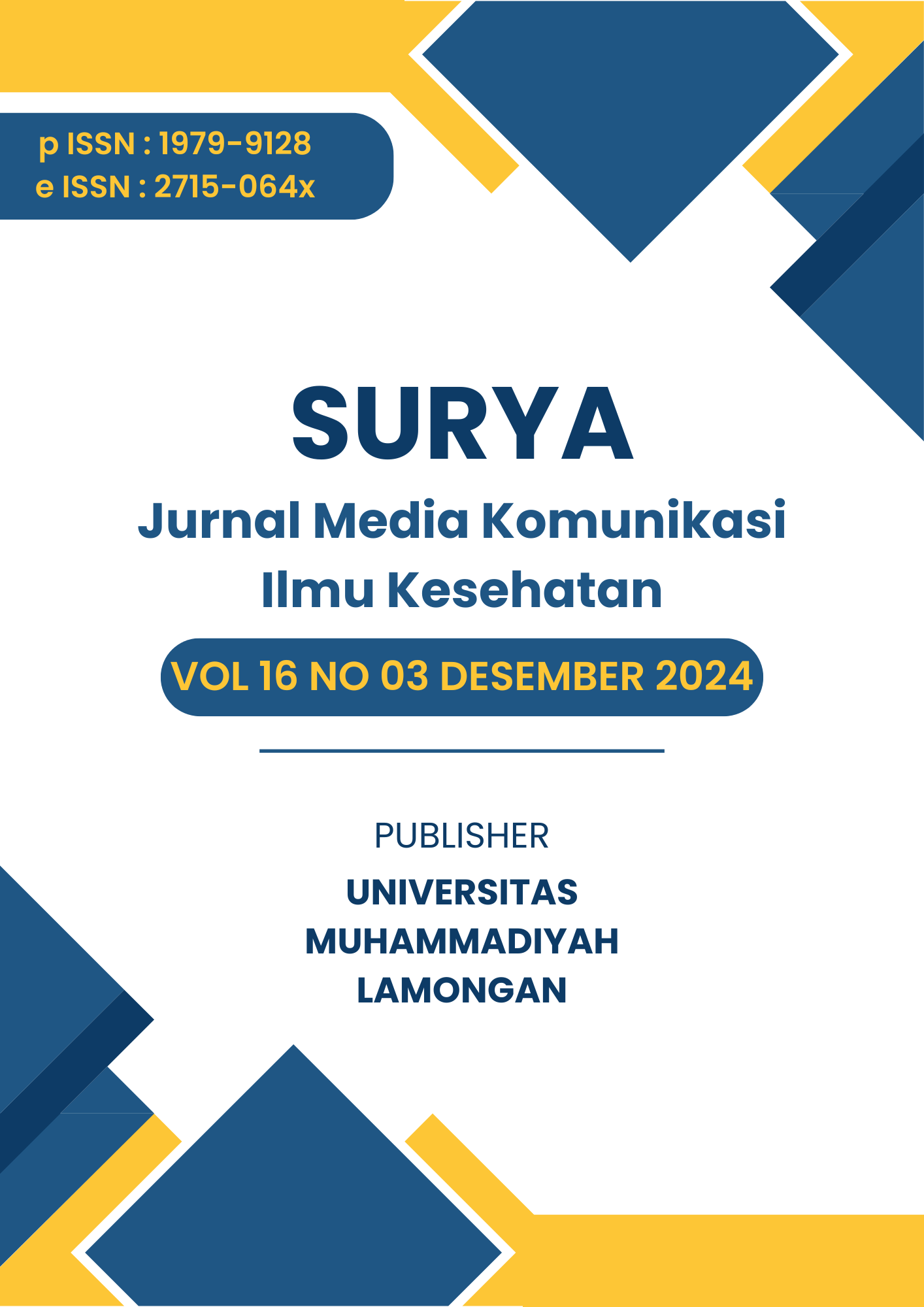The Relationship between Fat Consumption Frequency and Body Mass Index on Hypertension in Ampel Village, Lawang
DOI:
https://doi.org/10.38040/js.v16i3.1048Abstract
Introduction: Hypertension is a non-communicable disease and a leading cause of mortality worldwide. One of modifiable risk factor is excess body mass as it is known to facilitate a series of metabolic disturbances. This study aims to determine whether there is an relationship between fat consumption frequency and body mass index with hypertension.
Methods: This cross-sectional study, conducted in Dusun Ampel Gading, Mulyoarjo Village, Lawang District, Malang Regency, minimal 44 respondents determined using a two-proportion comparison formula. Participants were selected through convenience sampling. Independent variables included the frequency of consuming foods containing fat and body mass index measured by Food Frequency Questionnaire, while the dependent variable was blood pressure. The Spearman Correlation test was used to analyze the relationship between these variables and hypertension.
Results: A total of 50 respondents were obtained. The respondents were predominantly female and adults. Most of them did not have a family with hypertension. Spearman correlation analysis revealed no significant relationship between fat consumption frequency and hypertension (p > 0.05) or between BMI and hypertension (p > 0.05).
Conclusion: Effective prevention requires addressing multiple modifiable risk factors beyond fat consumption frequency and BMI, as their interactions are complex. Comprehensive strategies targeting these factors simultaneously are essential.
Downloads
Published
How to Cite
Issue
Section
Citation Check
License
Copyright (c) 2024 Ahmed Zaiyan Nahel Salamy, Ghivari Zuhal Fahmi, Tutus Rachkutho, Femmy Titania Fahira, Anisa Firdausi Rahmanda, Naufalluthfi Widodo, Reido Dafa, Muhammad Abdir Rahman Albarok, Widati Fatmaningrum, Heri Sugeng Widodo

This work is licensed under a Creative Commons Attribution 4.0 International License.
- The journal allows the author to hold the copyright of the article without restrictions.
- The journal allows the author(s) to retain publishing rights without restrictions.
- The legal formal aspect of journal publication accessibility refers to Creative Commons Attribution (CC BY).









